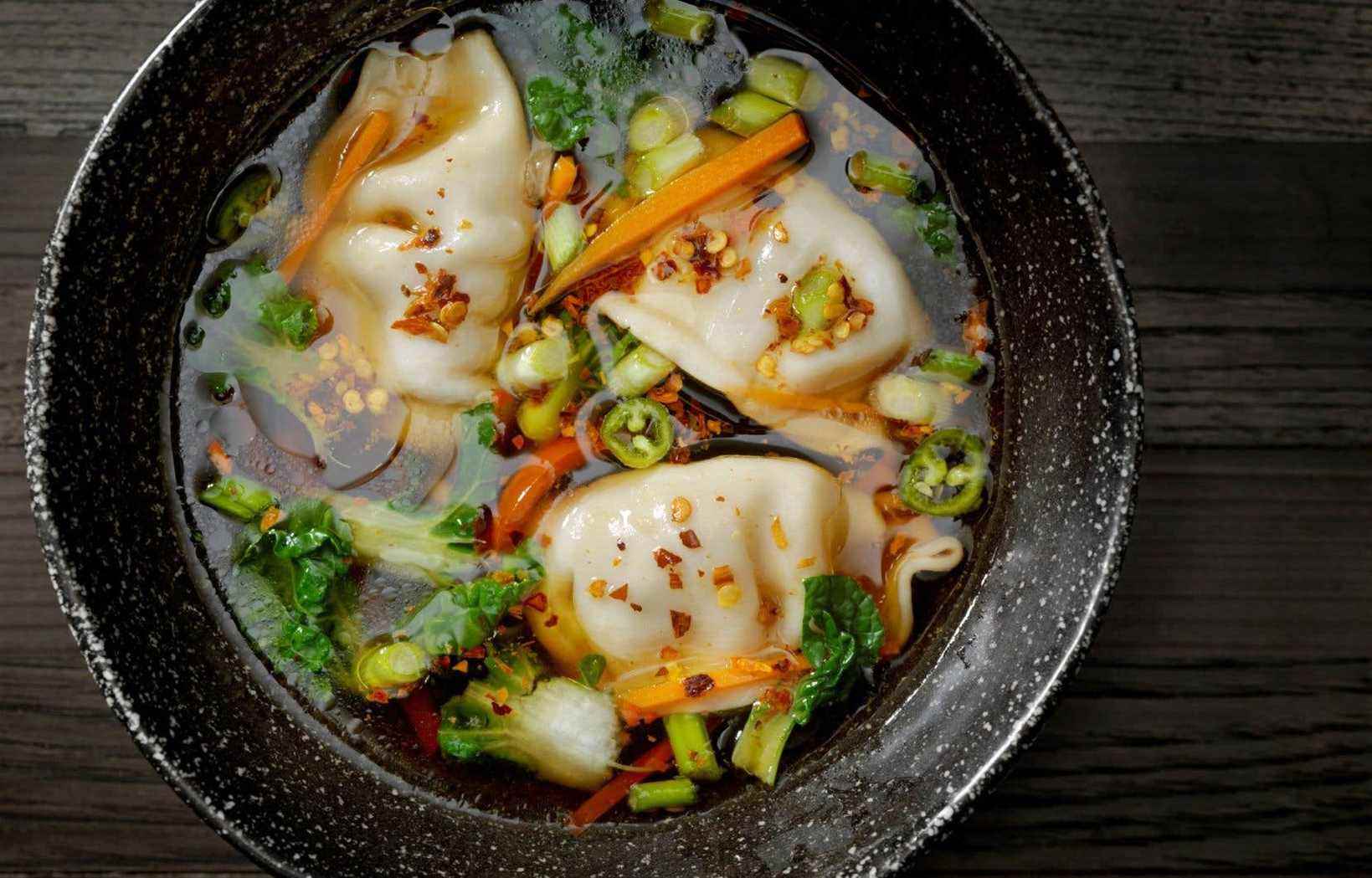This text is part of the special book Plaisirs
In the pot, it bubbles. Whatever is cooking, the soup warms the body and soul of the whole household. Stories about the most popular soups around the globe.
Onion soup
This divine recipe has made its way into several European cuisines since ancient Greece. As for the origin of the onion soup that we know, it is more complex.
In the book The meat maker: Medieval cuisine in the 14th centuryand century, by chef Guillaume Tirel, known as Taillevent, there is a recipe based on slices of onion browned in butter, then mixed with a puree of peas and verjus — juice extracted from immature grapes. There is also the worldly legend about Louis XV. Returning empty-handed from a hunting trip, he only has onions, butter and champagne on hand. This trio of ingredients would almost magically turn into onion soup. In the XVIIIand century, it was the turn of Stanislas Leszczynski, Duke of Lorraine, to fall under the spell of the onion soup tasted in an inn in Champagne.
It will however be necessary to wait a century before having the brilliant idea of garnishing it with croutons and cheese. First served to workers to sustain them, the onion soup au gratin quickly delights all gourmets!
wonton
Stuffed pasta has been present in several cultures for centuries: dumplings in China, momos in Tibet, pelmeni in Siberia, for example. As for the won ton soup, it would have carved out a place of choice in the cuisine of the nobles of the Qing dynasty in the 17and century.
But it wasn’t until the end of World War II that these flavor-stuffed pouches won the hearts of the general population, and many other nations.
Today, Chinese communities all over the world add their special twist to won ton soup, much to the delight of all foodies.
minestrone
The first minestrone recipes are said to have appeared during the time of the Roman Empire. Due to the economic boom, the inhabitants then have access to a greater variety of vegetables, so the peasants also have more leftovers to use in their modest recipes. From there was born the minestrone soup.
Although it usually contains tomatoes, beans, pasta, carrots and celery, the ingredients are subject to interpretation, depending on the vegetables available, the seasons and the tastes of the person cooking it.
Some are thicker while others are runnier depending on the amount of broth added. Might as well say that it’s the zero-waste soup par excellence!
Pho
The secret to good pho (pronounced “fire”) is in the broth. Often flavored with cinnamon, star anise, coriander seeds and ginger, it is beautifully sweet.
Vietnam’s flagship soup is said to have originated in Hanoi between the 1880s and 1900s, when there was a lot of interaction between Vietnamese, French and Chinese. The French bring their habit of eating beef, while the rice noodles and spices are brought by the Chinese.
At the end of the French occupation, pho made its way all over Vietnam, then all over the world. Its recipe is adapted according to the availability of ingredients and individual preferences. But the hot broth with exquisite flavors remains the basis of all pho.
seafood chowder
Seafood chowder has been a typical New England dish since the 1700s. It is said to have been brought over by Breton sailors. Like many dishes, it was first considered as food for the poor since it was made from an abundant commodity in the region.
The most popular, New England clam chowder, is cooked in a thick, milk-based broth. Often it also contains potatoes, onions and sometimes even bacon.
Manhattan-style chowder is distinguished by its red colored broth due to the addition of tomatoes and tomato paste. Its broth is also much more liquid and clear, due to the clam juice added to it.
